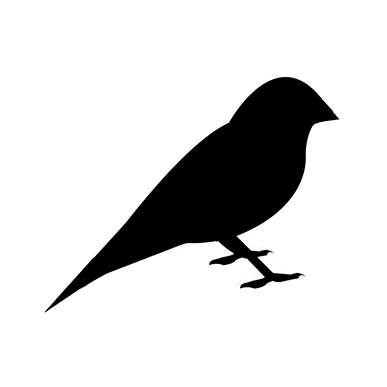In its sublime otherness, the symbol calls us.
Sign and Symbol

The transmutation of signs into symbols in art is achieved through framing. The frame is the perimeter that separates the content of the work from everything else. Physically it can be the boundaries of a stage, the edge of a movie screen, the blanks at the beginning and end of a text, the silence preceding and following a piece of music, the space around a sculpture. The frame is similar in function to the boxing ring or hockey rink in which the rules of ordinary life are suspended and those of the game come into effect. Its strongest analogue may be the magic circle that sorcerers would draw to contain the spirits summoned and ward off external influences. It is the boundary that allows the images to manifest for themselves, forming a space (integritas) within which they enter into relation with one another (consonantia) and shine as symbols (claritas).
When we say that a person has an artist’s eye or a poetic mind, we mean he or she has a knack for framing out elements of the outer or inner worlds, can see the numinous symbols in mundane signs. The mundane signs could be anything: an assortment of apples on a table as in the paintings of Cézanne, a group of people sojourning on a windy Scottish island as in Woolf’s To the Lighthouse (1927), two tramps and a dead tree as in Beckett’s Waiting for Godot (1953). It is the frame drawn around the signs, and not the signs themselves, that begins the process of symbol formation. The Danish painter Vilhelm Hammershøi is celebrated for his paintings of empty rooms in bourgeois homes. Though the scenes themselves could hardly be more ordinary, on the canvas they transfigure into haunted locales bursting with numinosity. Like the other artists just mentioned, Hammershøi was possessed of a kind of second sight that allowed him to perceive the excess of meaning in a given situation or imagining. A room for him was more than a room—it was a living thing with its own mind and soul.
The term second sight may seem to imply looking deeply into the complexity of things. Yet in a sense it is also the other way around. Art sticks to the surface, to the appearances of things in their immediate manifestation. For example, a photographer takes a picture of a doorway in an ancient city. By extracting the doorway from its real-world setting and allowing it to exist in the frame simply for what it is at the most immediate level—a darkened doorway in a sandstone wall—it becomes ambiguous, and in that ambiguity it becomes symbolically charged. The viewer’s imagination is engaged because he can only guess what door this is and where it might lead. What may have been the entrance to the latrine in the real world becomes a gateway to the underworld in the photograph. Artistic composition always has this “flattening” effect: it compresses everything down to a single plane, so that each detail exists independently and on an equal footing with all of the others. The result, however, is anything but flat, since what becomes visible is the great depth that hides in the surface of things. Mere appearances become apparitions connecting us to other levels of reality.
Framing involves selection and composition. Selection consists of choosing which elements to include in the frame and which to leave out, while composition consists in arranging the selected elements to maximize their power. In a great composition, the symbols constellate: they become synchronistically tied to one another. Each element in the work connects with every other element, and none can be removed without losing the sense of the whole. Only art can insist, as it does in a painting by Bruegel the Elder, that there could be a connection between a magpie perched on a gallows, a man shitting in the woods, a group of dancing peasants, a wooden cross, and the sunlight falling just so on a summer valley (The Magpie On the Gallows, 1568). In the visionary world of art, everything means something, everything is expressive, even if what is expressed is not translatable into words.
In its sublime otherness, the symbol calls us. Since it is a sign, but a sign that exceeds the normal semiotic mode, we feel compelled to interpret it. Thus the symbol always comes as a problem or enigma. Every answer we come up with, however, only yields more questions, more associations, because symbols are constructs of the primeval chaos that precedes and envelops the coherent order of things. The symbol opens up the paradoxes and irreconcilable oppositions that produce the tension necessary for a world to exist. Jung called these forces the archetypes of the collective unconscious, which is really a secular term for what were once called the gods or powers, “those half religious—half magical, half divine—half demonic, half superhuman—half subhuman, half abstract—half-concrete beings who are the genuine material of the mythos.”† Being incorporeal, nontemporal, and innately paradoxical, the archetypes are irreducible to any single interpretation. It is only in a manner of speaking that we say the symbol “points us” to unseen realities, because the Imaginal is precisely that which cannot be pointed to, since it is not within ordinary space and time. Symbols confront us with the unfathomable, and in so doing awaken us to Hamlet’s utterance that there are more things in heaven and earth than our sophisticated systems of thought will allow.
†Paul Tillich, Theology of Culture, ed. Robert C. Kimball (New York: Oxford University Press, 1959), 11.
Excerpted from Reclaiming Art in the Age of Artifice: A Treatise, Critique, and Call to Action by J.F. Martel, published by North Atlantic Books, copyright © 2015 by J.F. Martel. Reprinted by permission of North Atlantic Books. (pp. 69 — 72)
There is peace and security in Sign City. Thinking, there, is a matter of associating the right signs with the right things and then submitting these signs to the algorithm of your preferred ideology. But peace and security come at a price…
Harmony under threat is beautiful in the radical sense because it lets in the dimension of time, with its intimations of death, impermanence, and irreversible change.
Imagination begins at the limit of reason and judgment. Northrop Frye spoke of it as forming an “intermediate world” …

